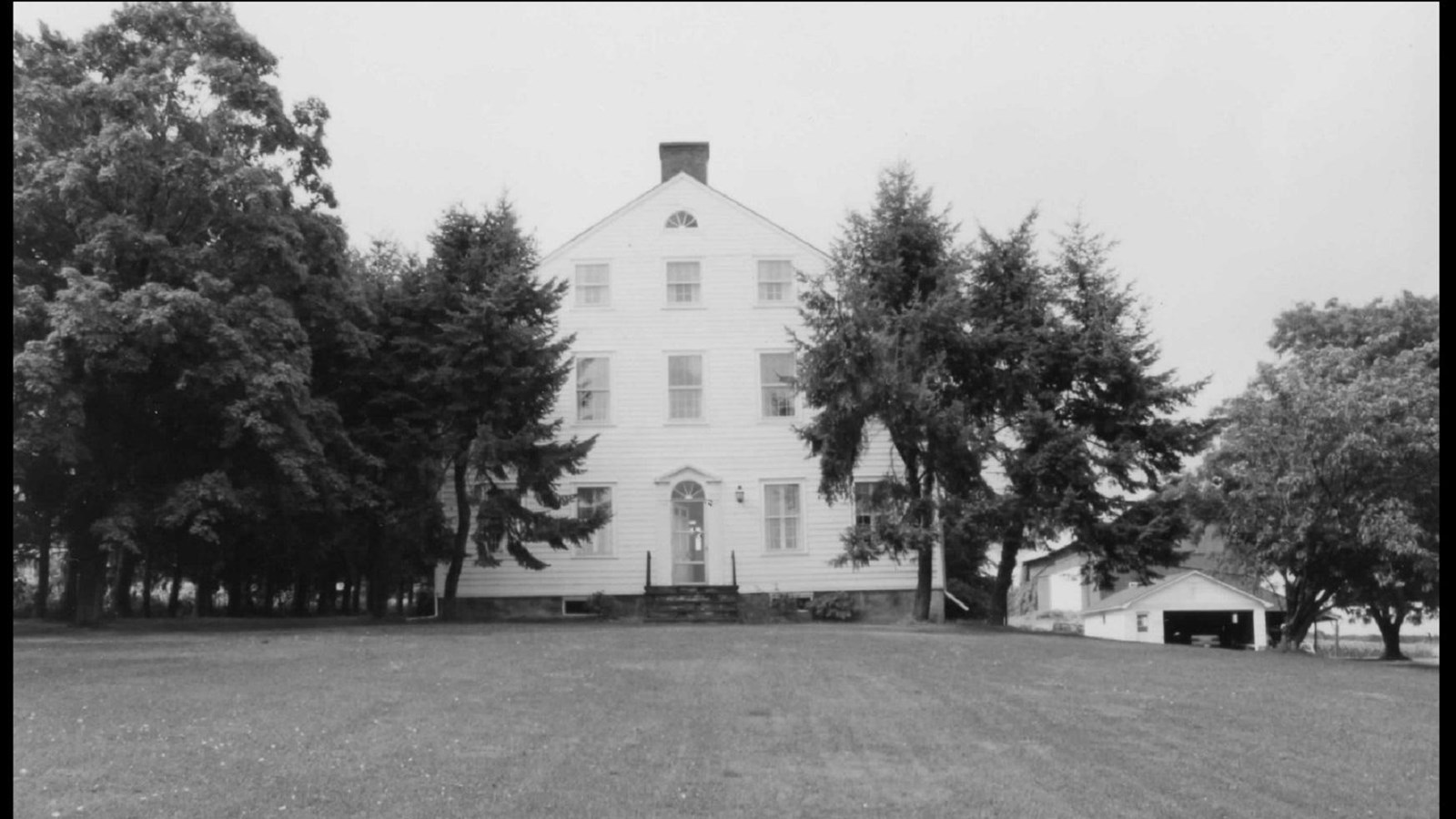Last updated: May 24, 2022
Place
The Friend's Home (Jemima Wilkinson House)

Courtesy National Register of Historic Places
The Friend’s Home was the residence of the Public Universal Friend, an American preacher. Born Jemima Wilkinson in 1752 into a prominent Quaker family, the Friend underwent a religious transformation during a serious illness at the age of 23. Upon recovering, the Friend renounced the name and pronouns of Jemima Wilkinson. The Friend claimed that Jemima had died, and that God had reanimated her body with a new, genderless spirit named the “Public Universal Friend.”
The Friend took up preaching, traveling throughout the Northeast and gathering followers into a community known as the Society of Universal Friends. The group’s theology largely resembled Quaker teachings. The gender presentation of the Friend, however, distinguished the Society and attracted considerable public attention. The preacher dressed in an androgynous or masculine style, often wearing long black robes and a broad-brimmed hat. The Friend ignored or scolded anyone who used the name “Jemima Wilkinson.”
Most followers referred to the preacher as “the Friend” or with the abbreviation “P.U.F.” Many of them used the pronouns “he” and “him” to address the Friend. But other observers noted that the Friend seemed to be “neither man nor woman.” Historians have written about the Friend’s gender differently across time. Some have pointed out that society frowned on public leadership roles for women. They describe the Friend as a woman who downplayed her femininity to preach. Other writers have characterized the Friend as transgender or nonbinary. While the Friend did not leave any writings specifically reflecting on gender identity, historians like Paul Moyer have argued that the preacher's gender presentation was closely tied to the experience of religious transformation. According to Moyer, the Friend's "holy persona blurred the very distinction between male and female."[1]
In the early 1790s, the group established a colony in western New York State, near the town now known as Jerusalem. A Federal style house served as the center of the group’s religious and agricultural activities. In 1819, the Public Universal Friend died after years of declining health. Members of the Society of Universal Friends initially buried the Friend’s body in the basement of the house. They later moved it to an unmarked location on the property. After the Friend’s death, the Society gradually disbanded.
The Friend’s Home is also known as the Jemima Wilkinson House. It was added to the National Register of Historic Places on August 24, 1994. The house and outbuildings sit on hills overlooking the Guyanoga Valley and Keuka Lake. The property is significant for its association with the Friend. It is also a distinctive example of Federal style residential architecture of the Finger Lakes region.
Notes and Bibliography
[1] Moyer, The Public Universal Friend, 8-9.
Moyer, Paul B. The Public Universal Friend: Jemima Wilkinson and Religious Enthusiasm in Revolutionary America. Ithaca, NY: Cornell University Press, 2015.
"Jemima Wilkinson House." NPS.gov (archived). https://web.archive.org/web/20170615182223/https://www.nps.gov/nr/travel/pwwmh/ny7.htm
National Register of Historic Places, Jemima Wilkinson House, Jerusalem, Yates County, New York, NR #94000965, https://catalog.archives.gov/id/75315619.
Schmidt, Samantha. "A genderless prophet drew hundreds of followers long before the age of nonbinary pronouns." Washington Post, Jan. 5, 2020. https://www.washingtonpost.com/history/2020/01/05/long-before-theythem-pronouns-genderless-prophet-drew-hundreds-followers/.
Springate, Megan, ed. LGBTQ America: A Theme Study of Lesbian, Gay, Bisexual, Transgender, and Queer History. Washington, DC: National Park Foundation, 2016.
Wisbey, Herbert A., Jr. Pioneer Prophetess: Jemima Wilkinson, the Publick Universal Friend. Ithaca, NY: Cornell University Press, 2009.
Article by Ella Wagner, Cultural Resources Office of Interpretation and Education.
